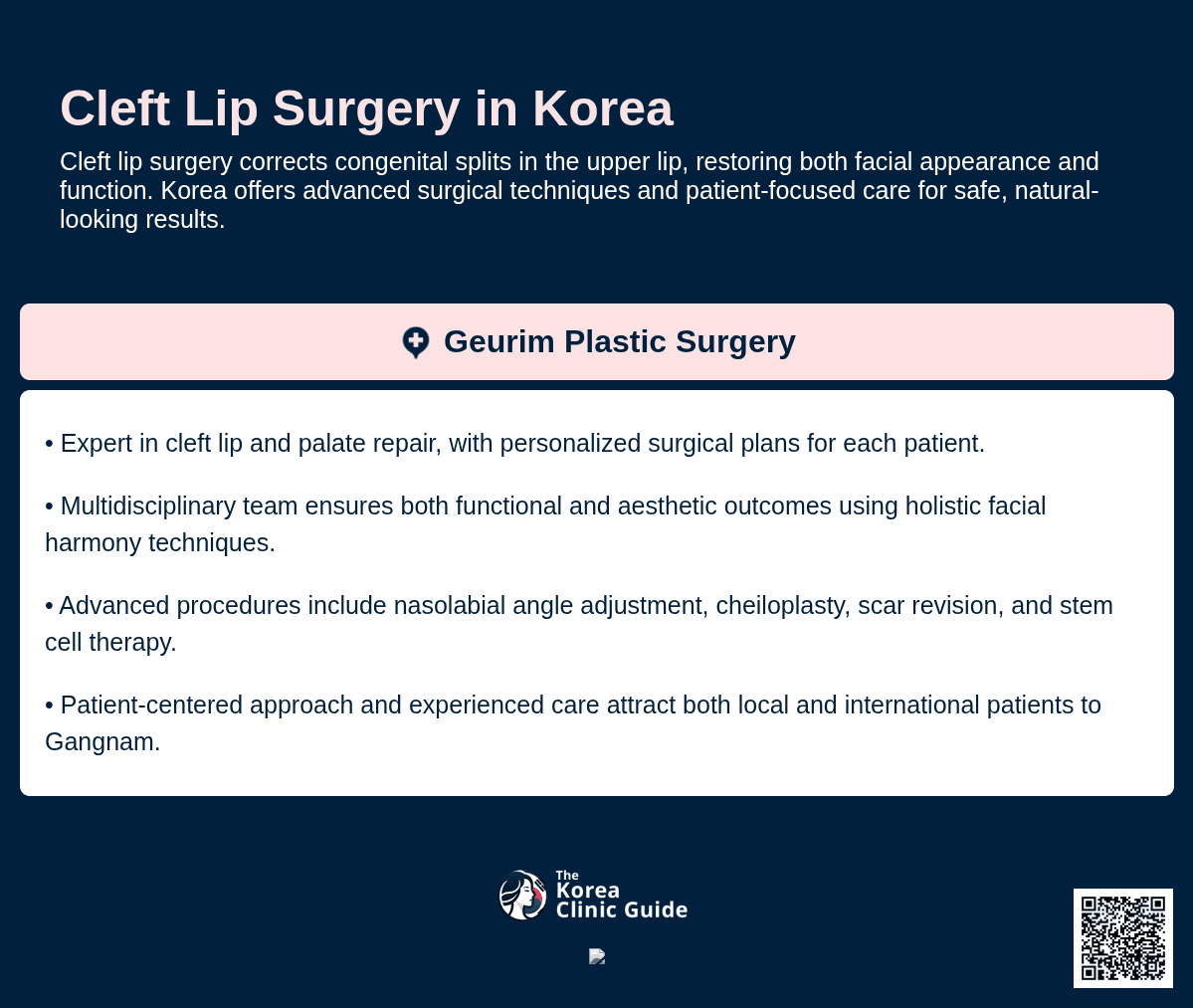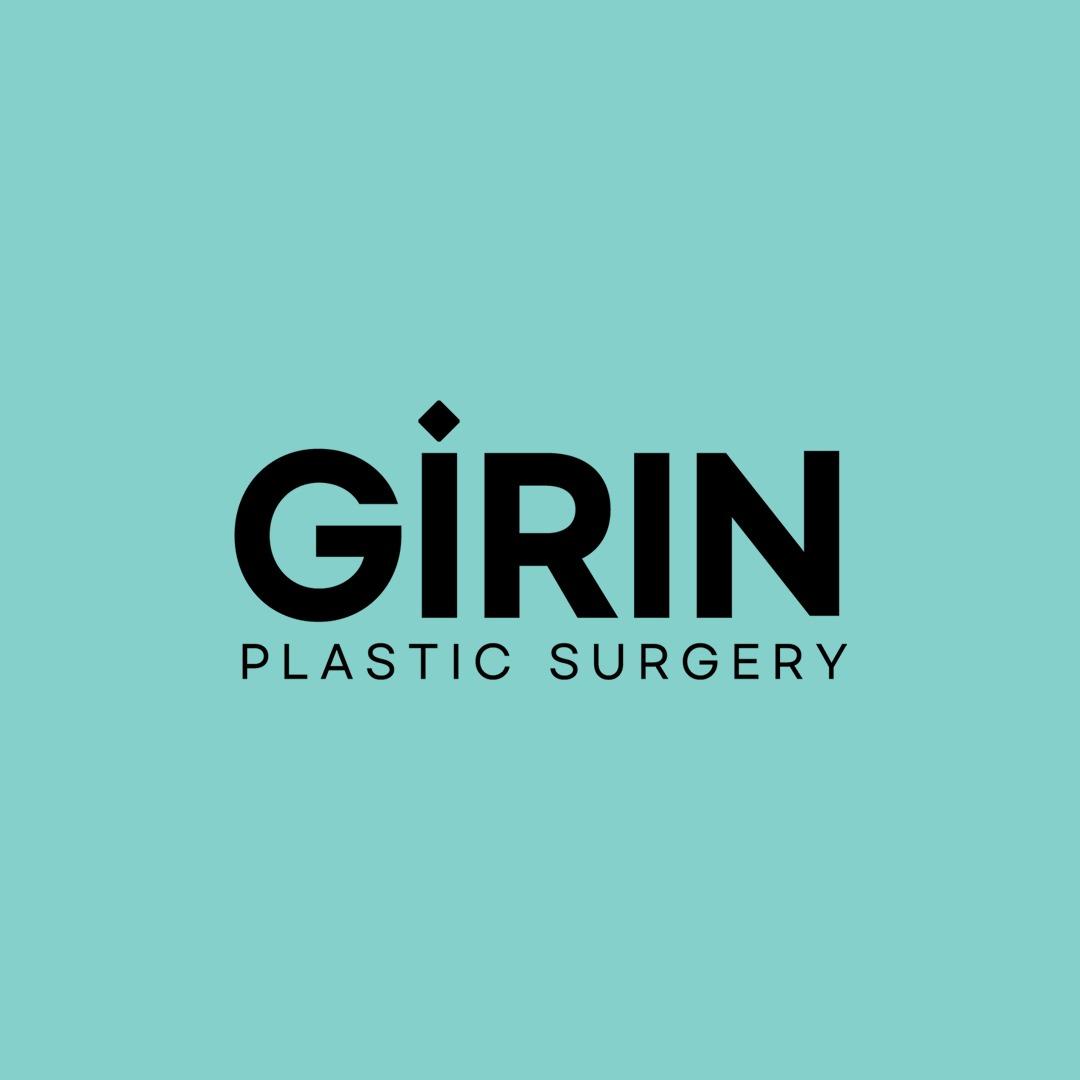Medical Tourism Blog
Cleft Lip Surgery in Korea | Best Clinics, Costs, Procedure Types & More

Table of contents
- What Is Cleft Lip Surgery?
- Best Clinics in Korea for Cleft Lip Surgery
- Cleft Lip Surgery in Korea
- Alternatives to Cleft Lip Surgery
- Conclusion
Considering treatment in Korea? Everything you need to know e.g. — how to avoid scams, visas, interpreters, recovery tips — in our Medical Tourism Master Guide. Plan with confidence in minutes, not weeks!
Have you ever imagined how a surgical procedure could transform not just a smile, but an entire life? Dive into the comprehensive world of cleft lip surgery in Korea, a leader in reconstructive expertise, and see how state-of-the-art techniques and compassionate care turn hope into reality for countless individuals.
What Is Cleft Lip Surgery?
Cleft lip surgery is a specialized medical procedure designed to correct the congenital split or separation in the upper lip, known as a cleft lip. This condition can occur on one or both sides of the lip and can sometimes extend into the nose. The surgical intervention is often performed by a team of specialists such as plastic surgeons, otolaryngologists, and speech therapists, to address both the cosmetic and functional aspects of the cleft.
Who Can Benefit from the Procedure?
Cleft lip surgery is typically recommended for infants born with this congenital anomaly. However, individuals of any age who have not yet undergone corrective surgery can benefit. The primary candidates include:
- Infants: Surgery is often performed when the child is between 3 to 6 months old.
- Children: Secondary surgeries may be needed as the child grows.
- Adults: Those who have not received correction in childhood or who are experiencing complications from prior surgeries.
Cleft lip surgery aims to improve not only the appearance but also the functional capabilities of the lip and nose, such as improving speech and eating.
Procedure Types
There are several techniques used in cleft lip surgery, and the choice of procedure largely depends on the severity and specifics of the cleft. The main types include:
-
Primary Cleft Lip Repair (Cheiloplasty):
- This is usually the initial surgery to close the cleft. It involves stitching the gap in the lip to bring the separated muscles together.
-
Nasal Alveolar Molding (NAM):
- Performed before the primary surgery, NAM helps to reshape the gums, lips, and nostrils to improve the outcomes of the upcoming surgery.
-
Revision Surgery:
- This is carried out to correct any residual deformities or asymmetries that remain after the initial repair, typically in older children or adults.
-
Secondary Procedures:
- These may involve corrective rhinoplasty, dental work, or speech surgery to address additional complications or aesthetic concerns.
Pros & Cons
Pros
-
Improved Appearance:
- Offers significant cosmetic improvements by closing the lip gap and aligning the shape of the lip and nose.
-
Enhanced Functionality:
- Helps to restore proper lip function, improving feeding, speech, and breathing.
-
Psychological Benefits:
- Reduces social stigma and boosts self-esteem and quality of life.
-
Developmental Advantages:
- Early intervention can positively affect speech development and social interactions.
Cons
-
Multiple Surgeries:
- Often, more than one procedure is required, especially as the child grows.
-
Risks of Surgery:
- As with any surgical procedure, there are risks involved, such as infection, bleeding, and adverse reactions to anesthesia.
-
Scarring:
- While techniques are continually improving, some level of scarring is inevitable.
-
Recovery Time:
- Post-operative care can be extensive, requiring significant time for healing and several follow-up visits.
-
Emotional Impact:
- Both the child and their families may face emotional challenges, requiring psychological support before and after surgery.
In summary, cleft lip surgery offers a transformative solution for individuals affected by this congenital condition. The procedure, with its various techniques and stages, aims to provide both functional and aesthetic benefits, albeit with certain risks and challenges.
Best Clinics in Korea for Cleft Lip Surgery
Listed below are the best clinics in Korea for cleft lip surgery:
| Clinic Name | Key Features | Special Techniques |
|---|---|---|
| Geurim Plastic Surgery | Premier Gangnam location, tailored patient solutions, exceptional cleft lip & palate surgery reputation, comprehensive plastic surgery center, multidisciplinary expertise, patient-centered approach, holistic facial harmony focus, attracts local & international patients | Specialized cleft lip and palate repair, nasolabial angle adjustment, cheiloplasty, facial asymmetry correction, advanced scar revision, stem cell therapies, up-to-date medical techniques |
Geurim Plastic Surgery
Geurim Plastic Surgery Clinic, located in the heart of Gangnam, Seoul, stands out as a premier destination for both aesthetic and reconstructive procedures, with a strong reputation for exceptional cleft lip and palate surgery. As a comprehensive plastic surgery center, Geurim Clinic provides tailored solutions to meet each patient’s unique needs, combining advanced surgical techniques with personalized care. Its multidisciplinary expertise ensures not only outstanding cosmetic results but also functional restoration, making it an ideal choice for individuals seeking cleft lip correction in Korea.
Key reasons why Geurim Plastic Surgery Clinic is the best choice for Cleft Lip Surgery:
- Specialized expertise in cleft lip and cleft palate surgical repair, offering comprehensive solutions for congenital anomalies.
- Proven experience with a wide range of reconstructive and aesthetic procedures, ensuring the highest standards of safety and results.
- Focus on holistic facial harmony with complementary treatments such as nasolabial angle adjustment, cheiloplasty, and facial asymmetry correction.
- Use of advanced technologies and up-to-date medical techniques, including scar revision and stem cell therapies, to optimize healing and minimize visible scarring.
- Patient-centered approach, with a commitment to providing customized treatment plans and detailed post-operative care.
- Conveniently located in Gangnam, a medical hub in Seoul, attracting both local and international patients seeking world-class surgical outcomes.
Find more about this clinic here: Geurim Plastic Surgery Website
Cleft Lip Surgery in Korea

Korea is globally recognized for its advanced medical procedures, particularly in the field of reconstructive and plastic surgery. Among the procedures drawing international patients to the country is cleft lip surgery. For those considering or preparing to undertake this journey, understanding the comprehensive experience is crucial.
Pre-Arrival Preparations
Before arriving in Korea, it's essential to undertake thorough research and select a reputable hospital or clinic specializing in cleft lip surgery. Many medical institutions in Korea provide multilingual support, including English, to facilitate communication with international patients. Upon choosing a suitable medical facility, most offer virtual consultations that allow patients to discuss their cases with surgeons and medical staff. During these consultations, the patient's medical history, specific needs, and expectations are assessed meticulously.
Traveling to Korea
Korea is well-connected globally via its major international airports, Incheon and Gimpo. International patients will find it relatively easy to reach the country. Upon arrival, transportation options such as airport shuttles, taxis, and public transit make navigating to medical facilities straightforward. Many hospitals provide airport pickup services to assist patients directly upon their arrival.
Accommodation and Initial Consultation
Korea offers a variety of accommodation options ranging from luxury hotels to more modest stays, catering to different budget needs. Some hospitals even offer accommodation packages or partnerships with nearby hotels for the convenience of their international patients.
The initial in-person consultation involves a comprehensive evaluation where the surgeon examines the patient closely, discusses the surgical plan, expected outcomes, and potential risks. This consultation helps establish a clear understanding between the patient and the medical team.
The Surgical Procedure
Cleft lip surgery requires a highly skilled surgical team due to its delicate nature. The procedure typically involves the following steps:
- Anesthesia: The patient is administered general anesthesia to ensure they are completely unconscious and pain-free during the surgery.
- Incisions and Tissue Manipulation: Skilled surgeons make precise incisions to realign and reshape the tissues around the cleft. This is performed with meticulous care to minimize scarring and ensure a natural-looking result.
- Closure and Recovery: The incisions are closed using sutures, and the patient is moved to a recovery area for post-operative observation.
Post-Operative Care and Recovery
After the surgery, patients usually spend a few days in the hospital for close monitoring. During this period, the medical team ensures that the healing process is progressing well, managing any pain and preventing potential complications. Follow-up appointments are scheduled to monitor recovery and address any concerns the patient might have.
Cultural Experience and Support
Korea’s rich cultural heritage offers patients and their families an opportunity to explore the country while recovering. From historical sites to modern shopping districts, experiencing local culture can be a pleasant distraction during the healing process. Hospitals often provide information on local attractions and cultural activities for international patients.
Language and Support Services
Many medical facilities in Korea boast excellent support services, including interpreters and coordinators who assist with translation, appointment scheduling, and logistical arrangements. This support is invaluable, ensuring that language barriers do not hinder the patient’s experience.
Costs and Insurance
Cleft lip surgery in Korea is known for its cost-effectiveness without compromising on quality. However, understanding the financial aspects beforehand is crucial. Many hospitals provide detailed cost breakdowns during the initial consultation phase. Additionally, verifying with insurance providers about coverage for international medical procedures is an important step for prospective patients.
The Overall Experience
Undergoing cleft lip surgery in Korea involves meticulous pre-operative planning, advanced surgical techniques, and comprehensive post-operative care. The country’s combination of high medical standards, patient-centered services, and cultural hospitality creates a supportive environment for patients seeking this life-changing procedure.
Alternatives to Cleft Lip Surgery
While cleft lip and cleft palate surgeries are generally the primary treatment options to correct these congenital anomalies, there are alternative methods and interventions that can assist in managing the symptoms and improving the quality of life for affected children. Here are three recommended alternatives:
1. Orthodontic Treatment and NasoAlveolar Molding (NAM)
Orthodontic treatment is often a crucial part of the management of cleft defects. NasoAlveolar Molding (NAM) is a presurgical procedure used for infants with cleft lip and/or palate. It involves using a custom-fabricated oral appliance to shape the gums, lip, and nostrils before the cleft lip and palate surgery.
Benefits:
- Aligns Tissues for Surgery: Helps in aligning the tissues more favorably, reducing the gap and improving the aesthetic outcome of the subsequent surgery.
- Improves Nasal Shape: Assists in correcting the shape of the baby's nose, providing better symmetry and function.
- Minimizes Number of Surgeries: By pre-positioning the tissues, NAM can reduce the number of surgical interventions required over time.
2. Speech Therapy
Speech therapy is essential for children with cleft lip and/or palate because these conditions can affect speech development due to issues with the palate, which forms the roof of the mouth.
Benefits:
- Improves Communication: Helps children develop clearer speech and better communication skills, addressing issues such as nasal speech or articulation problems.
- Strengthens Oral Muscles: Therapy can strengthen the muscles used for speaking, improving overall speech quality.
- Early Intervention: Starting therapy early can lead to better outcomes by addressing problems before they become ingrained habits.
3. Specialized Feeding Techniques
Feeding difficulties are common in infants with cleft lip and/or palate due to the challenges in creating effective suction. Specialized feeding bottles and nipples are designed to assist these infants in feeding adequately.
Benefits:
- Nutritional Support: Ensures that the baby receives the necessary nutrition for growth and development during the crucial early months of life.
- Ease of Feeding: Specialized bottles make feeding less strenuous for both the baby and parents, ensuring feeding is less frustrating and more comfortable.
- Promotes Healthy Weight Gain: Adequate feeding techniques help in maintaining healthy weight gain and overall growth in infants with clefts.
Conclusion
In conclusion, Cleft Lip Surgery in Korea stands out as a beacon of advanced medical expertise, compassionate care, and exceptional outcomes. With a confluence of cutting-edge technology, skilled surgeons, and a holistic approach to patient care, Korea has established itself as a global leader in this field. Patients benefit from the country's commitment to medical excellence, innovative surgical techniques, and comprehensive post-operative support, making Korea an ideal destination for those seeking effective, life-changing solutions for cleft lip conditions. Whether for locals or international patients, the high standards set by Korean medical institutions ensure that individuals receive world-class treatment and support, paving the way for a brighter, more confident future.









